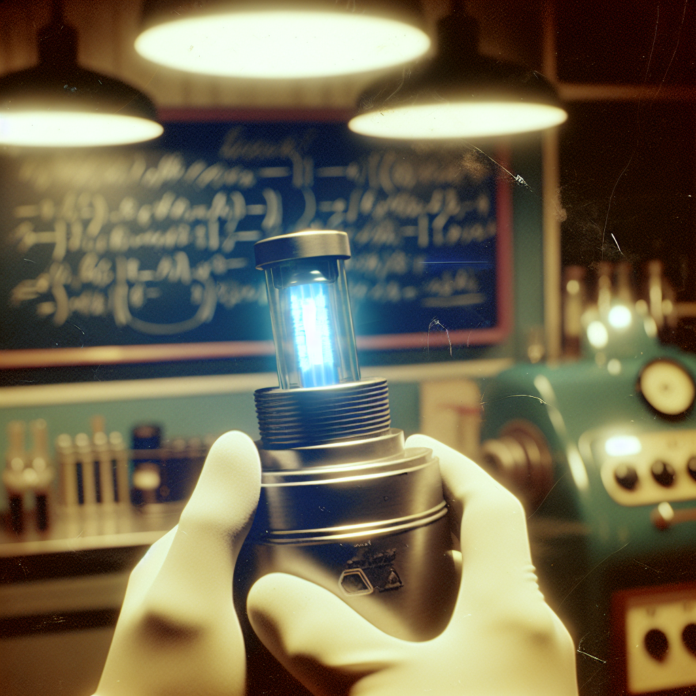Revolutionary Nuclear Waste Battery: A Breakthrough in Sustainable Energy
Introduction
Scientists have made a groundbreaking advancement in energy storage by developing a battery that converts nuclear waste into electricity. This innovation could revolutionize the renewable energy sector, offering a sustainable, long-lasting power source while addressing the issue of radioactive waste disposal.
What Is a Nuclear Waste Battery?
A nuclear waste battery, also known as a diamond battery, is a novel energy storage device that harnesses the power of decaying radioactive isotopes. By encasing the nuclear material within artificial diamond layers, these batteries generate electricity through the natural decay process, ensuring a continuous flow of power for decades.
How It Works
The core principle behind nuclear waste batteries is the use of beta decay. Radioactive isotopes, such as Carbon-14 extracted from nuclear waste, emit beta particles as they decay. These particles interact with the diamond layers, which then convert the energy into an electrical current.
Unlike traditional batteries that require chemical reactions and frequent recharging, nuclear waste batteries generate electricity autonomously without degradation, making them exceptionally durable.
Advantages of Nuclear Waste Batteries
1. Extremely Long Lifespan
One of the most remarkable attributes of nuclear waste batteries is their lifespan. Some versions of these batteries could last for thousands of years, making them a game-changer for applications requiring low-power, long-duration energy sources.
2. Sustainable Use of Nuclear Waste
By repurposing nuclear waste, these batteries help mitigate the environmental hazards associated with radioactive disposal. This advancement offers a twofold benefit: reducing nuclear waste while providing a sustainable power source.
3. No Need for Recharging
Unlike lithium-ion and other conventional batteries that require frequent charging, nuclear waste batteries provide a continuous energy supply without the need for recharging or maintenance.
4. Compact and Lightweight
Thanks to their solid-state construction, nuclear waste batteries are relatively small and lightweight, making them ideal for various applications, including space exploration, medical implants, and remote sensing devices.
5. Minimal Environmental Impact
Traditional battery production contributes to environmental pollution through mining and hazardous waste disposal. Nuclear waste batteries eliminate some of these concerns by repurposing existing radioactive materials, reducing ecological impact.
Challenges and Concerns
1. Safety Concerns
Although the radioactive materials used in nuclear waste batteries are encased in diamond layers, ensuring safety remains a primary concern. Scientists are working on advancing shielding techniques to eliminate any risks associated with radiation exposure.
2. Cost and Scalability
The current production process of diamond batteries is expensive. For widespread adoption, researchers must develop cost-effective manufacturing methods to make these batteries accessible for commercial use.
3. Limited Power Output
One limitation of nuclear waste batteries is their relatively low power output compared to conventional batteries. While they are ideal for low-energy applications, researchers are striving to improve energy generation capacity for more demanding uses.
Applications of Nuclear Waste Batteries
1. Space Exploration
Space missions require long-lasting, reliable power sources. Nuclear waste batteries provide an excellent solution for powering spacecraft, satellites, and rovers, reducing reliance on solar energy where sunlight is limited.
2. Biomedical Devices
Medical implants, such as pacemakers and hearing aids, could benefit from nuclear waste batteries by ensuring a lifetime power supply without the need for surgical battery replacements.
3. Remote Sensor Systems
Sensor networks in remote or extreme environments, such as deep-sea exploration and arctic research stations, could operate continuously with nuclear waste batteries, eliminating the need for maintenance and battery replacements.
4. Defense and Security Applications
Military applications requiring continuous, long-lasting power sources—such as surveillance drones and unmanned vehicles—could benefit significantly from nuclear waste battery technology.
The Future of Nuclear Waste Batteries
As research and investment in nuclear waste battery technology continue, we can expect further advancements in efficiency, scalability, and cost reduction. Scientists are exploring alternative radioactive isotopes and improved energy conversion techniques to maximize power output.
If successfully commercialized, these batteries could reshape the energy landscape by offering a greener, more sustainable alternative to conventional energy storage technologies.
Conclusion
The development of nuclear waste batteries marks a significant step forward in sustainable energy solutions. By converting radioactive waste into a continuous power source, this technology not only addresses the pressing issue of nuclear waste management but also presents a revolutionary approach to energy storage.
With ongoing research and innovation, nuclear waste batteries have the potential to revolutionize multiple industries—from space exploration to biomedical technology—ushering in a new era of sustainable and long-lasting energy solutions.


